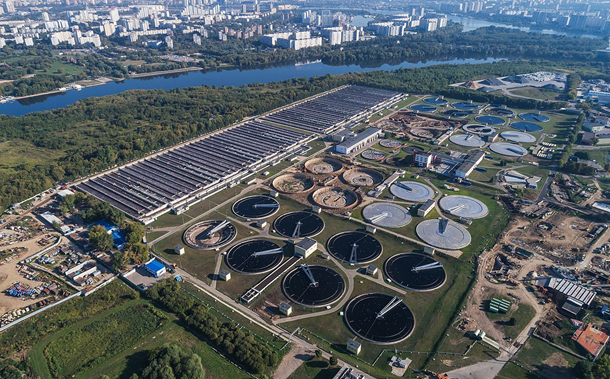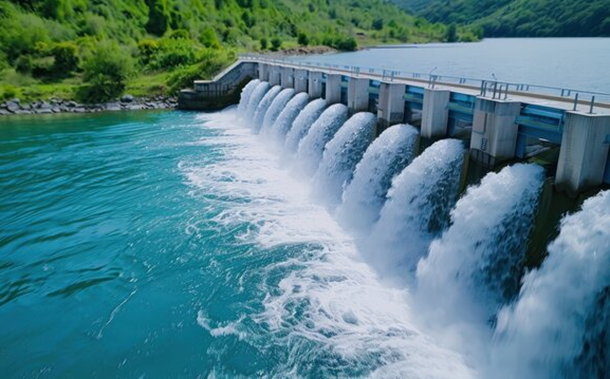Bond-Slippage Characteristics between Carbon Fiber Reinforced Polymer Sheet and Heat-Damaged Geopolymer Concrete
Downloads
Doi:10.28991/CEJ-2024-010-07-03
Full Text:PDF
Downloads
[2] Davidovits, J. (1994). Global warming impact on the cement and aggregates industries. World Resource Review, 6(2), 263-278.
[3] Chen, J., Shen, L., Song, X., Shi, Q., & Li, S. (2017). An empirical study on the CO2 emissions in the Chinese construction industry. Journal of Cleaner Production, 168, 645–654. doi:10.1016/j.jclepro.2017.09.072.
[4] Davidovits, J. (1989). Geopolymers and geopolymeric materials. Journal of Thermal Analysis, 35(2), 429–441. doi:10.1007/BF01904446.
[5] Davidovits, J. (1991). Geopolymers - Inorganic polymeric new materials. Journal of Thermal Analysis, 37(8), 1633–1656. doi:10.1007/BF01912193.
[6] Tanyildizi, H., & Yonar, Y. (2016). Mechanical properties of geopolymer concrete containing polyvinyl alcohol fiber exposed to high temperature. Construction and Building Materials, 126, 381–387. doi:10.1016/j.conbuildmat.2016.09.001.
[7] Ramujee, Kolli., & PothaRaju, M. (2017). Mechanical Properties of Geopolymer Concrete Composites. Materials Today: Proceedings, 4(2), 2937–2945. doi:10.1016/j.matpr.2017.02.175.
[8] Szabó, R., Dolgos, F., Debreczeni, í., & Mucsi, G. (2022). Characterization of mechanically activated fly ash-based lightweight geopolymer composite prepared with ultrahigh expanded perlite content. Ceramics International, 48(3), 4261–4269. doi:10.1016/j.ceramint.2021.10.218.
[9] Tale Masoule, M. S., Bahrami, N., Karimzadeh, M., Mohasanati, B., Shoaei, P., Ameri, F., & Ozbakkaloglu, T. (2022). Lightweight geopolymer concrete: A critical review on the feasibility, mixture design, durability properties, and microstructure. Ceramics International, 48(8), 10347–10371. doi:10.1016/j.ceramint.2022.01.298.
[10] Luhar, S., Nicolaides, D., & Luhar, I. (2021). Fire Resistance Behaviour of Geopolymer Concrete: An Overview. Buildings, 11(3), 82. doi:10.3390/buildings11030082.
[11] Abd Razak, S. N., Shafiq, N., Guillaumat, L., Farhan, S. A., & Lohana, V. K. (2022). Fire-Exposed Fly-Ash-Based Geopolymer Concrete: Effects of Burning Temperature on Mechanical and Microstructural Properties. Materials, 15(5), 1884. doi:10.3390/ma15051884.
[12] Cao, V. D., Pilehvar, S., Salas-Bringas, C., Szczotok, A. M., Rodriguez, J. F., Carmona, M., Al-Manasir, N., & Kjí¸niksen, A. L. (2017). Microencapsulated phase change materials for enhancing the thermal performance of Portland cement concrete and geopolymer concrete for passive building applications. Energy Conversion and Management, 133, 56–66. doi:10.1016/j.enconman.2016.11.061.
[13] Mane, S., & Jadhav, H. (2012). Investigation of geopolymer mortar and concrete under high temperature. Magnesium, 1(5), 384-390.
[14] Hassan, A., Arif, M., & Shariq, M. (2020). Mechanical Behaviour and Microstructural Investigation of Geopolymer Concrete After Exposure to Elevated Temperatures. Arabian Journal for Science and Engineering, 45(5), 3843–3861. doi:10.1007/s13369-019-04269-9.
[15] Mohmmad, S. H., Gülşan, M. E., & Çevik, A. (2022). Behaviour of Geopolymer Concrete Two-Way Slabs Reinforced by FRP Bars After Exposure to Elevated Temperatures. Arabian Journal for Science and Engineering, 47(10), 12399–12421. doi:10.1007/s13369-021-06411-y.
[16] Kadhim, S., Çevik, A., Niş, A., Bakbak, D., & Aljanabi, M. (2022). Mechanical behavior of fiber reinforced slag-based geopolymer mortars incorporating artificial lightweight aggregate exposed to elevated temperatures. Construction and Building Materials, 315. doi:10.1016/j.conbuildmat.2021.125766.
[17] Trentin, C., & Casas, J. R. (2015). Safety factors for CFRP strengthening in bending of reinforced concrete bridges. Composite Structures, 128, 188–198. doi:10.1016/j.compstruct.2015.03.048.
[18] Chen, W., Pham, T. M., Sichembe, H., Chen, L., & Hao, H. (2018). Experimental study of flexural behaviour of RC beams strengthened by longitudinal and U-shaped basalt FRP sheet. Composites Part B: Engineering, 134, 114–126. doi:10.1016/j.compositesb.2017.09.053.
[19] Al-Rousan, R. Z., Alhassan, M. A., & AlShuqari, E. A. (2018). Behavior of plain concrete beams with DSSF strengthened in flexure with anchored CFRP sheets”Effects of DSSF content on the bonding length of CFRP sheets. Case Studies in Construction Materials, 9, e00195. doi:10.1016/j.cscm.2018.e00195.
[20] Al-Abdwais, A. H. (2023). Experimental and Numerical Assessment of Bonding Between Geopolymer Concrete and CFRP Sheet Using NSM Techniques. Civil and Environmental Engineering, 19(2), 676–691. doi:10.2478/cee-2023-0061.
[21] Lei, M., Wang, X., Chen, J., Huang, H., Lin, J., Yan, Z., & Wu, Z. (2024). Bond behavior of the FRP grid-concrete interface with geopolymer mortar as an adhesive. Journal of Building Engineering, 87, 109120. doi:10.1016/j.jobe.2024.109120.
[22] Li, W., Li, S., Lu, Y., & Liu, Z. (2024). Bond properties of steel bar with engineered geopolymer composites under monotonic load. Structural Concrete, 1-23. doi:10.1002/suco.202300689.
[23] Khan, Q. S., Akbar, H., Qazi, A. U., Kazmi, S. M. S., & Munir, M. J. (2024). Bond Stress Behavior of a Steel Reinforcing Bar Embedded in Geopolymer Concrete Incorporating Natural and Recycled Aggregates. Infrastructures, 9(6), 93. doi:10.3390/infrastructures9060093.
[24] Niyazuddin, & Umesh, B. (2024). Experimental investigation on bond behaviour of the GFRP bars with normal and high strength geopolymer concrete. Construction and Building Materials, 429, 136395. doi:10.1016/j.conbuildmat.2024.136395.
[25] Zhao, J., Wang, S., Wang, Z., Wang, K., & Fu, C. (2023). Bond performance between FRP bars and geopolymer concrete after elevated temperature exposure. Construction and Building Materials, 384, 131476. doi:10.1016/j.conbuildmat.2023.131476.
[26] Nakaba, K., Kanakubo, T., Furuta, T., & Yoshizawa, H. (2001). Bond behavior between fiber-reinforced polymer laminates and concrete. ACI Structural Journal, 98(3), 359–367. doi:10.14359/10224.
[27] Mensah, C., Wang, Z., Bonsu, A. O., & Liang, W. (2020). Effect of different bond parameters on the mechanical properties of FRP and concrete interface. Polymers, 12(11), 2466. doi:10.3390/polym12112466.
[28] Ben Ouezdou, M., Belarbi, A., & Bae, S.-W. (2009). Effective Bond Length of FRP Sheets Externally Bonded to Concrete. International Journal of Concrete Structures and Materials, 3(2), 127–131. doi:10.4334/ijcsm.2009.3.2.127.
[29] Hosseini, A., & Mostofinejad, D. (2014). Effective bond length of FRP-to-concrete adhesively-bonded joints: Experimental evaluation of existing models. International Journal of Adhesion and Adhesives, 48, 150–158. doi:10.1016/j.ijadhadh.2013.09.022.
[30] Wang, H. T., Liu, S. S., Liu, Q. L., Pang, Y. Y., & Shi, J. W. (2021). Influences of the joint and epoxy adhesive type on the CFRP-steel interfacial behavior. Journal of Building Engineering, 43, 103167. doi:10.1016/j.jobe.2021.103167.
[31] Irshidat, M. R., & Al-Saleh, M. H. (2016). Effect of using carbon nanotube modified epoxy on bond-slip behavior between concrete and FRP sheets. Construction and Building Materials, 105, 511–518. doi:10.1016/j.conbuildmat.2015.12.183.
[32] Alhassan, M. A., Al Rousan, R. Z., & Al Shuqari, E. A. (2019). Bond-slip behavior between fiber reinforced concrete and CFRP composites. Ain Shams Engineering Journal, 10(2), 359–367. doi:10.1016/j.asej.2019.03.001.
[33] Al-Rousan, R. Z., & AL-Tahat, M. F. (2019). Consequence of surface preparation techniques on the bond behavior between concrete and CFRP composites. Construction and Building Materials, 212, 362–374. doi:10.1016/j.conbuildmat.2019.03.299.
[34] Haddad, R. H., & Al-Rousan, R. Z. (2016). An anchorage system for CFRP strips bonded to thermally shocked concrete. International Journal of Adhesion and Adhesives, 71, 10–22. doi:10.1016/j.ijadhadh.2016.08.003.
[35] Al-Rousan, R., & Al-Tahat, M. (2020). An anchoring groove technique to enhance the bond behavior between heat-damaged concrete and CFRP composites. Buildings, 10(12), 232. doi:10.3390/buildings10120232.
[36] Haddad, R. H., Al-Rousan, R., & Almasry, A. (2013). Bond-slip behavior between carbon fiber reinforced polymer sheets and heat-damaged concrete. Composites Part B: Engineering, 45(1), 1049–1060. doi:10.1016/j.compositesb.2012.09.010.
[37] Alshuqari, E. A., & Çevik, A. (2022). Behavior of bond-slip relationship of lightweight and normal weight geopolymer with various FRP sheets using end-groove anchorage. Construction and Building Materials, 343. doi:10.1016/j.conbuildmat.2022.128060.
[38] Alhamad, A., Yehia, S., Lublóy, í‰., & Elchalakani, M. (2022). Performance of Different Concrete Types Exposed to Elevated Temperatures: A Review. Materials, 15(14), 5032. doi:10.3390/ma15145032.
[39] Turkey, F. A., Beddu, S. B., Ahmed, A. N., & Al-Hubboubi, S. K. (2022). Effect of high temperatures on the properties of lightweight geopolymer concrete based fly ash and glass powder mixtures. Case Studies in Construction Materials, 17, 1489. doi:10.1016/j.cscm.2022.e01489.
[40] BS EN 1992-1-2:2004. (2004). Design of concrete structures - Part 1-2: General rules - Structural fire design. British Standard Institute (BSI), London, United Kingdom.
- Authors retain all copyrights. It is noticeable that authors will not be forced to sign any copyright transfer agreements.
- This work (including HTML and PDF Files) is licensed under a Creative Commons Attribution 4.0 International License.![]()














